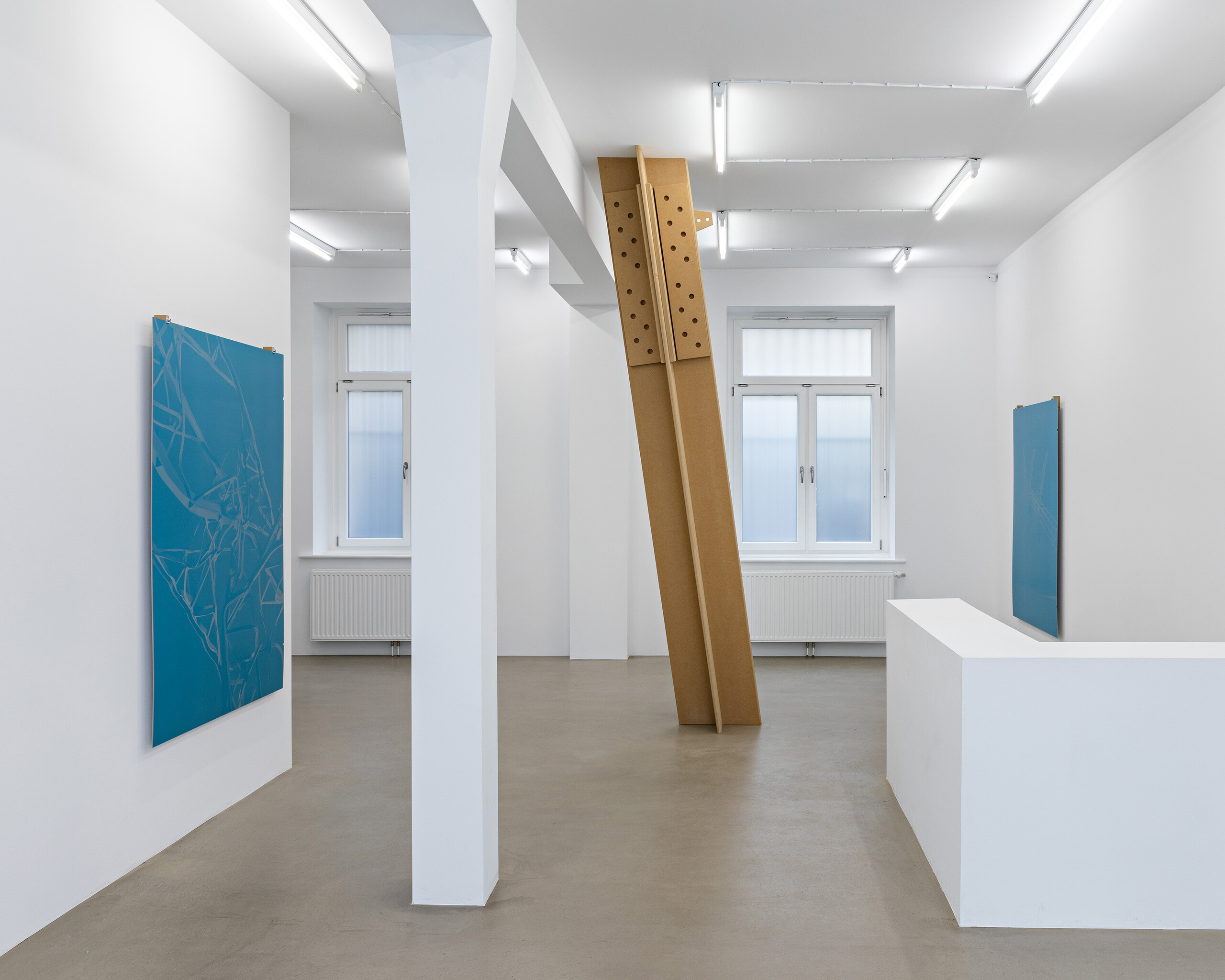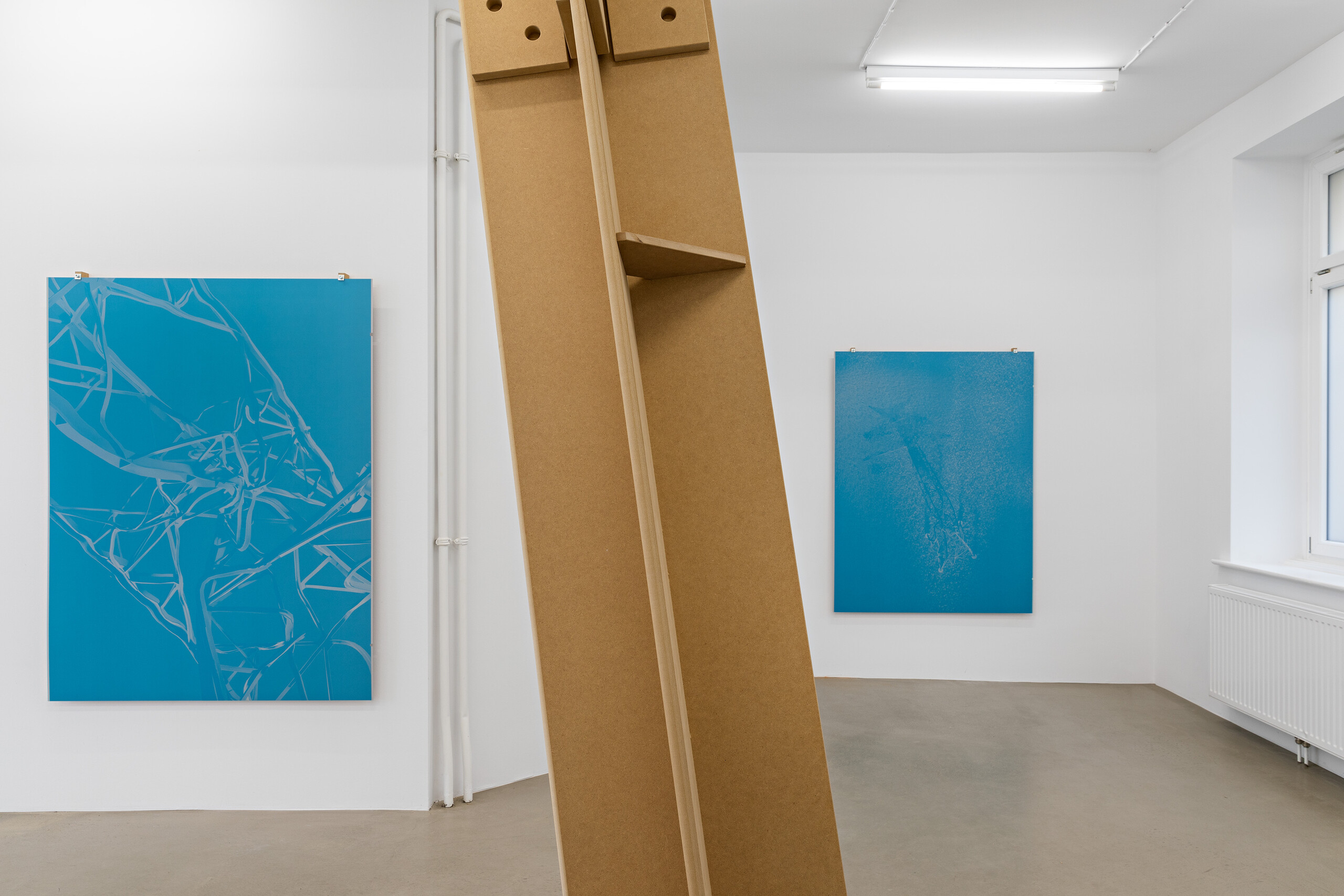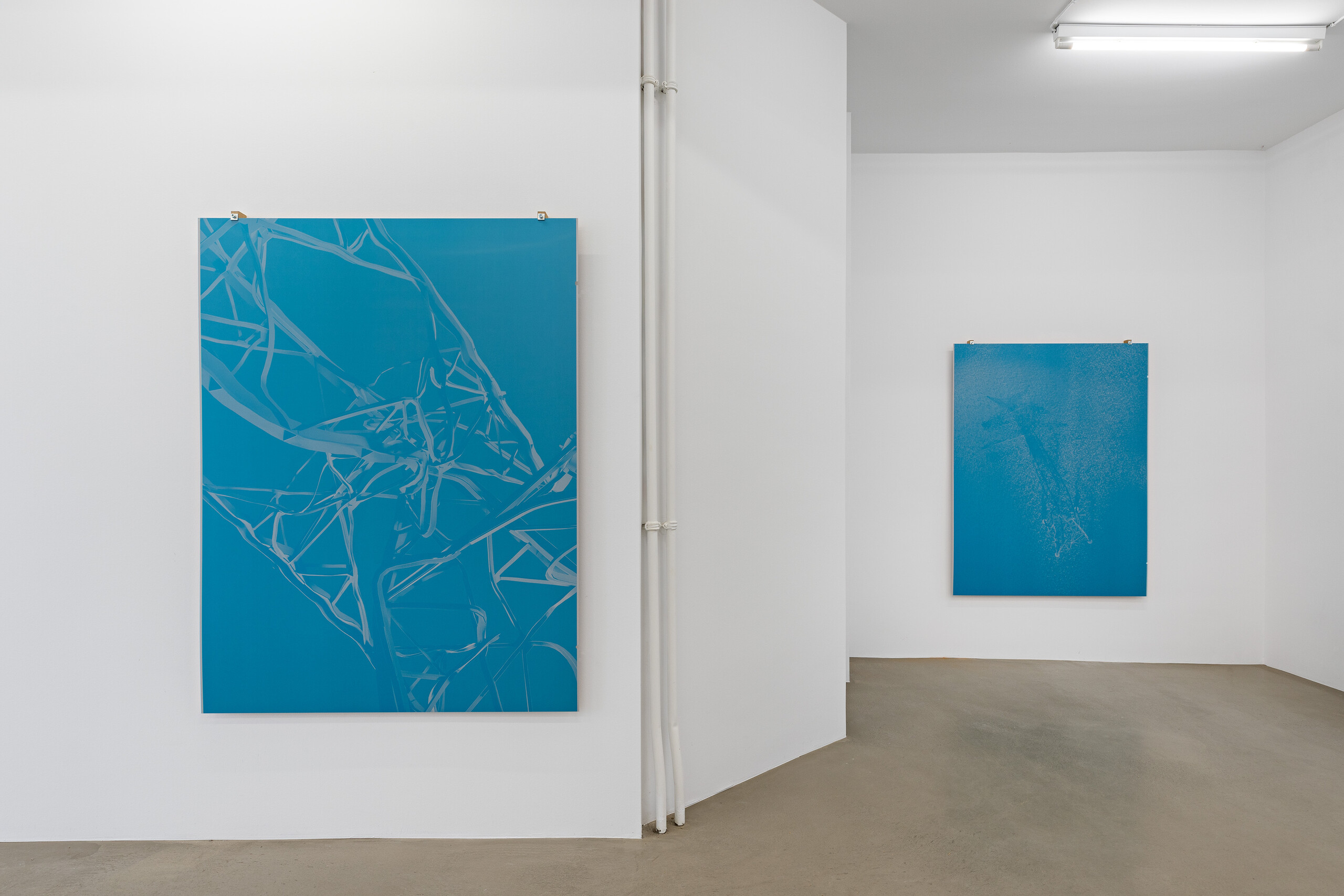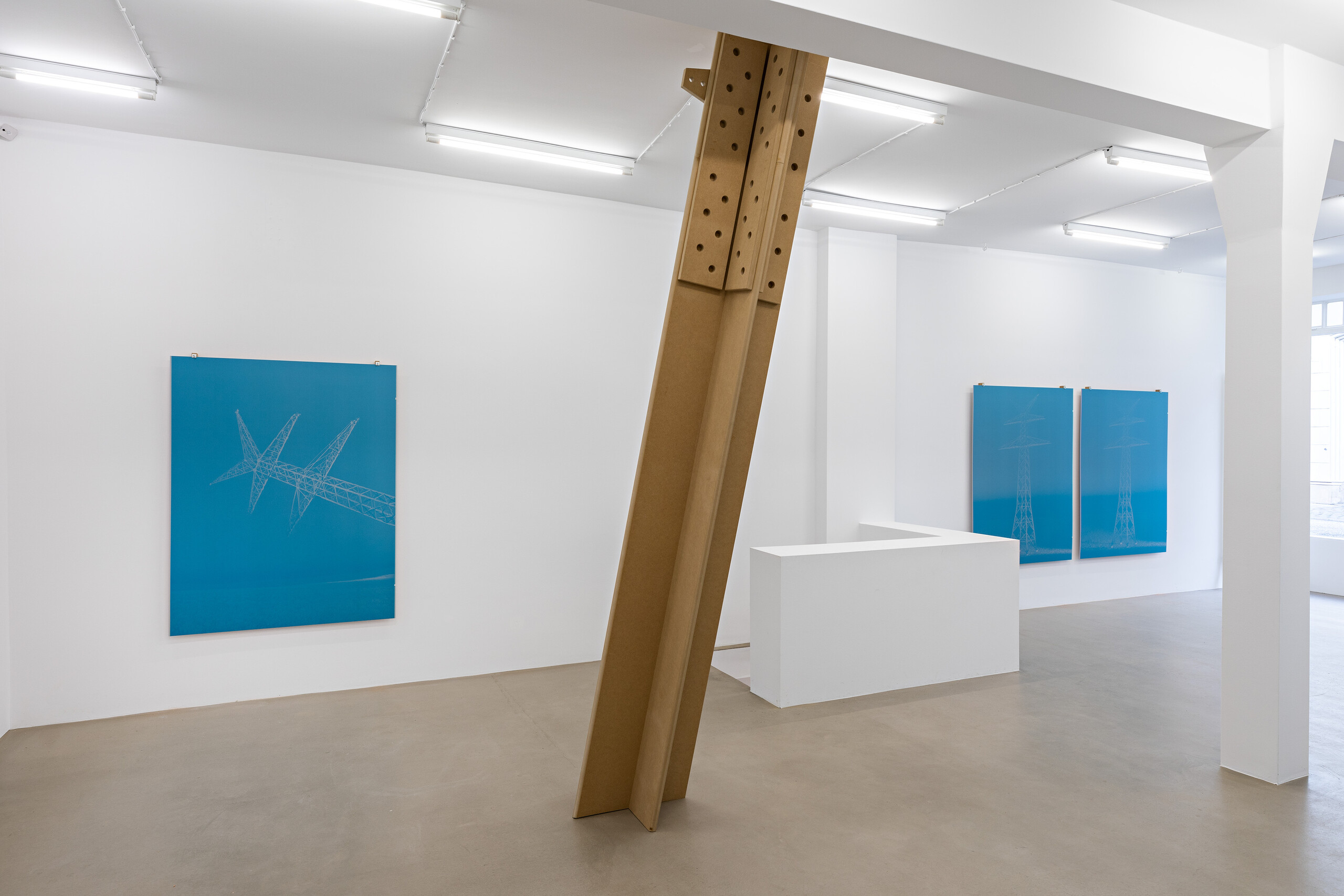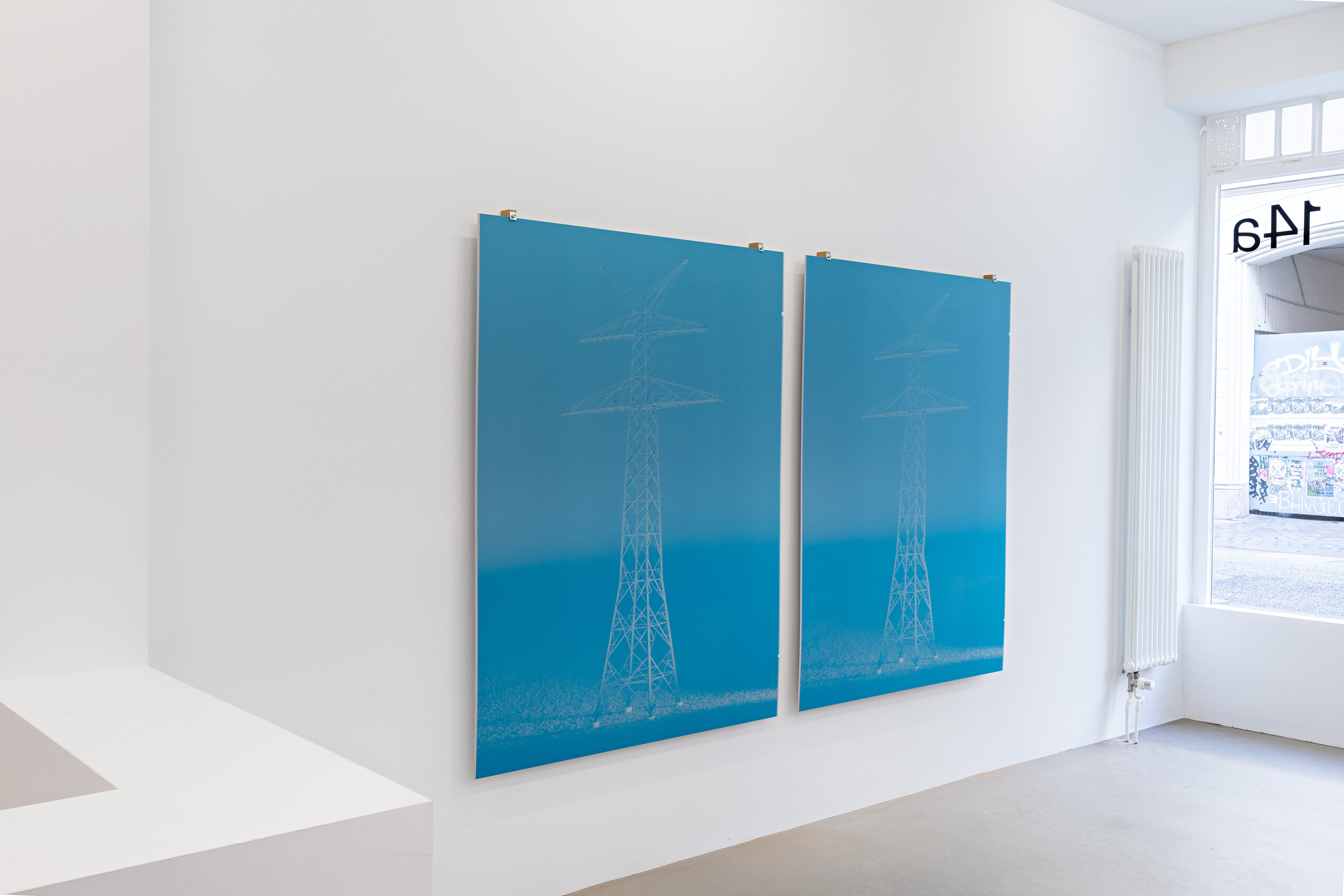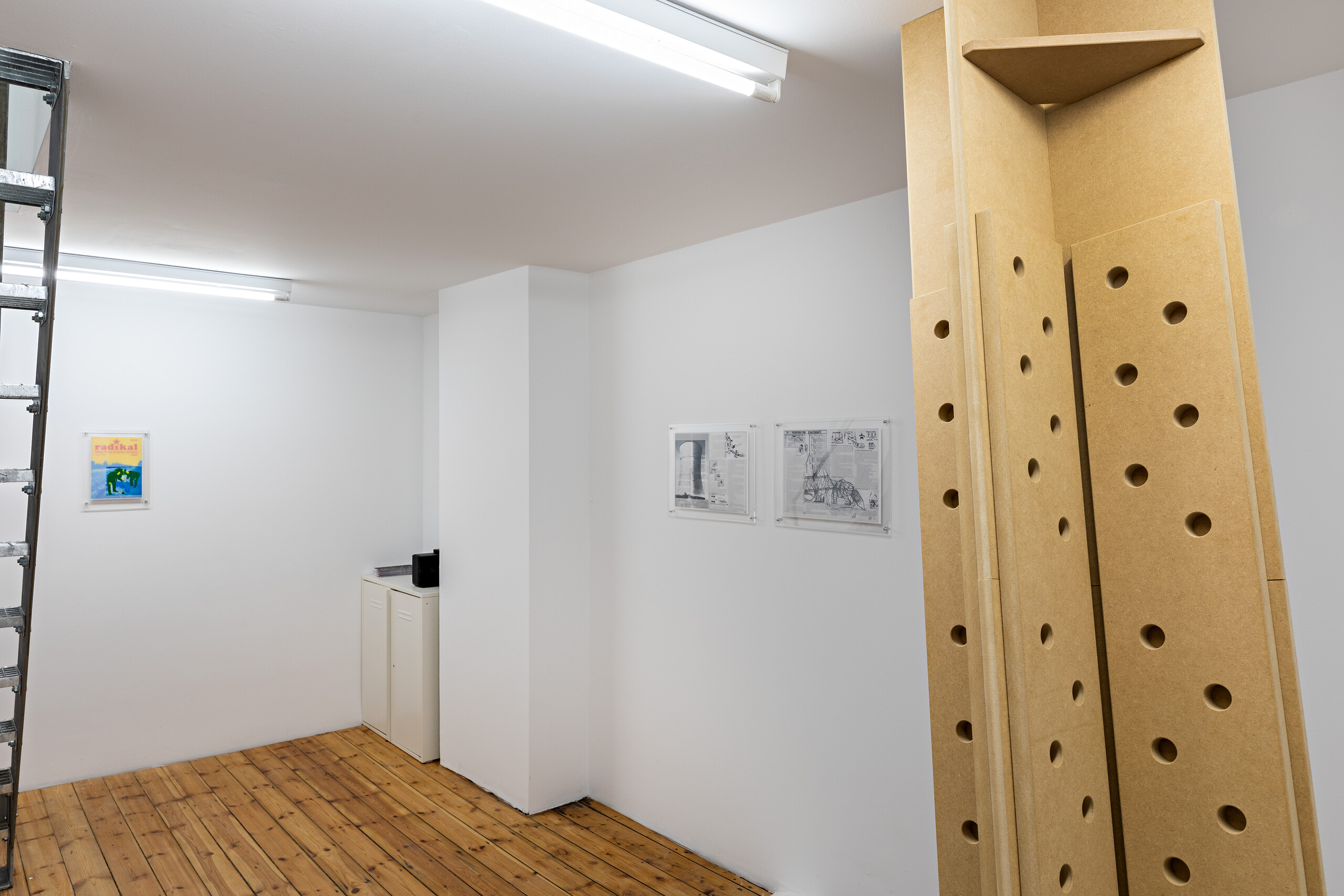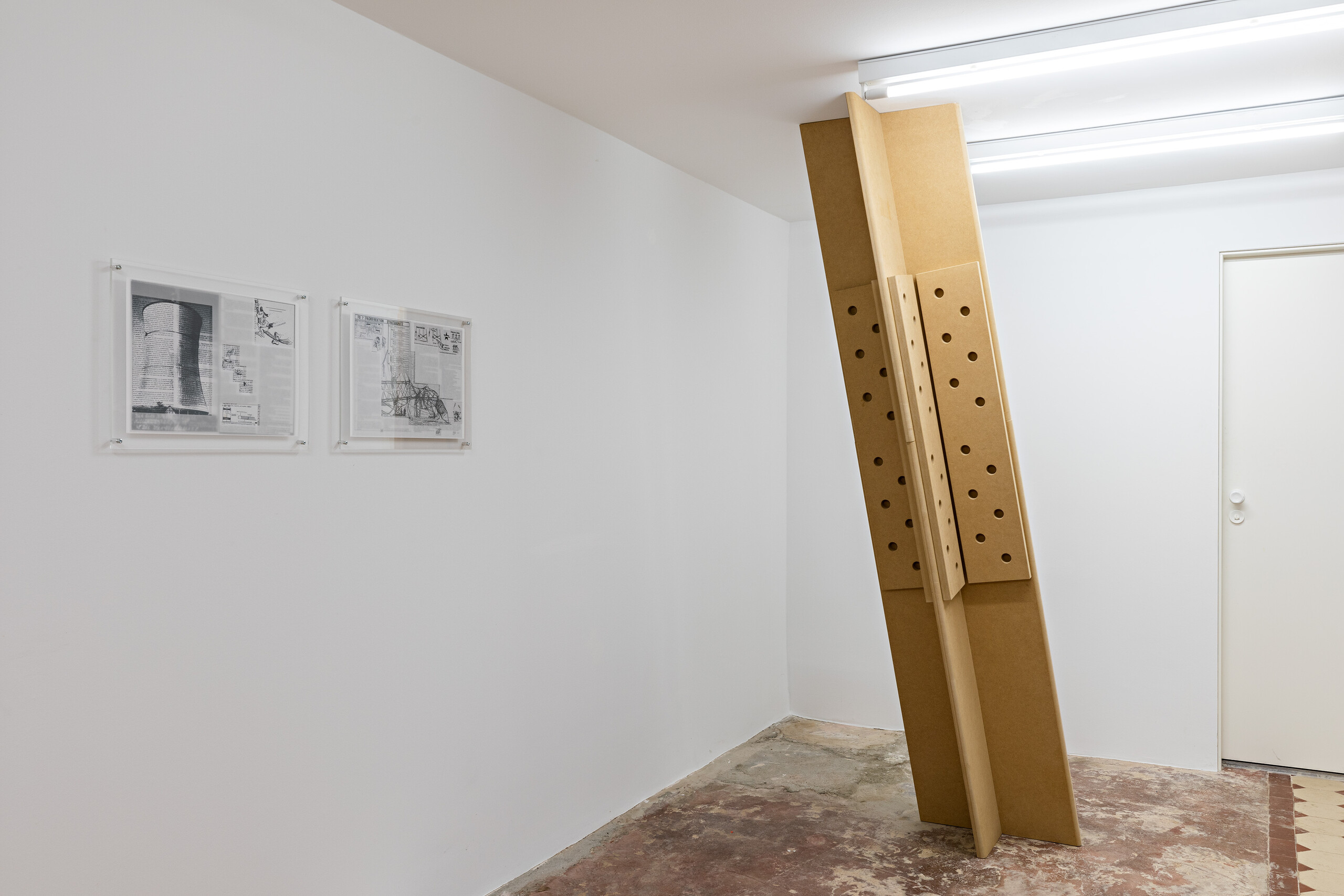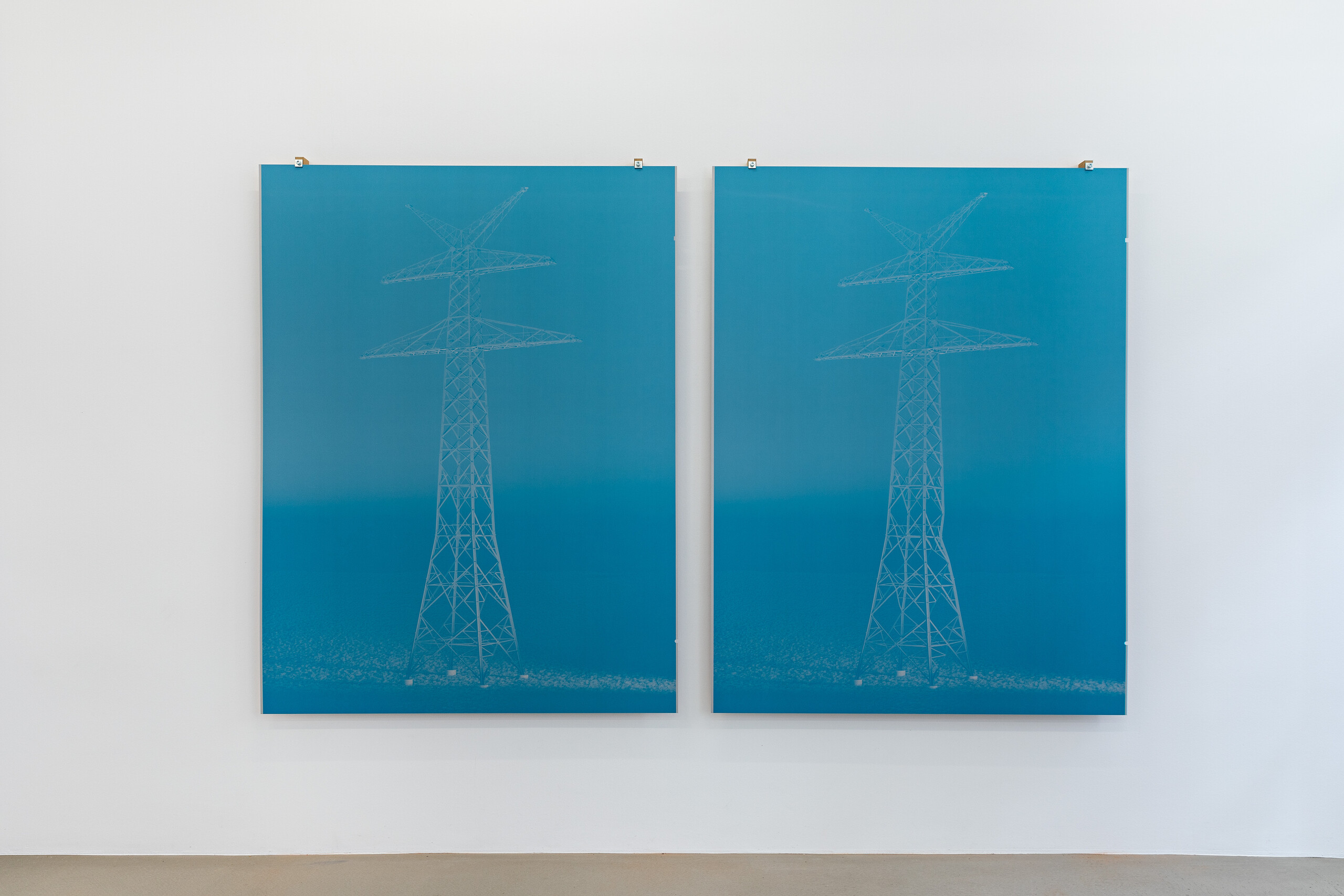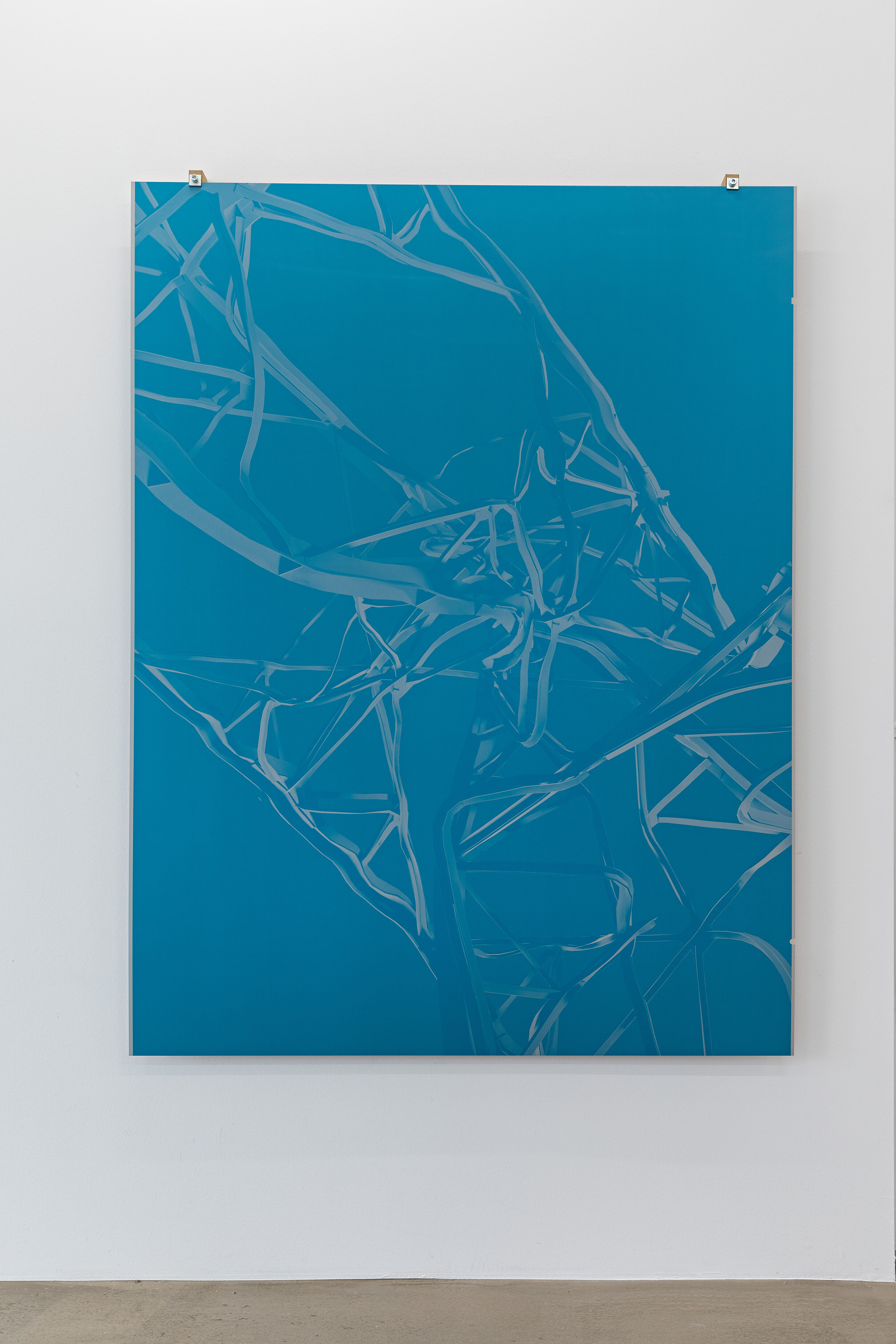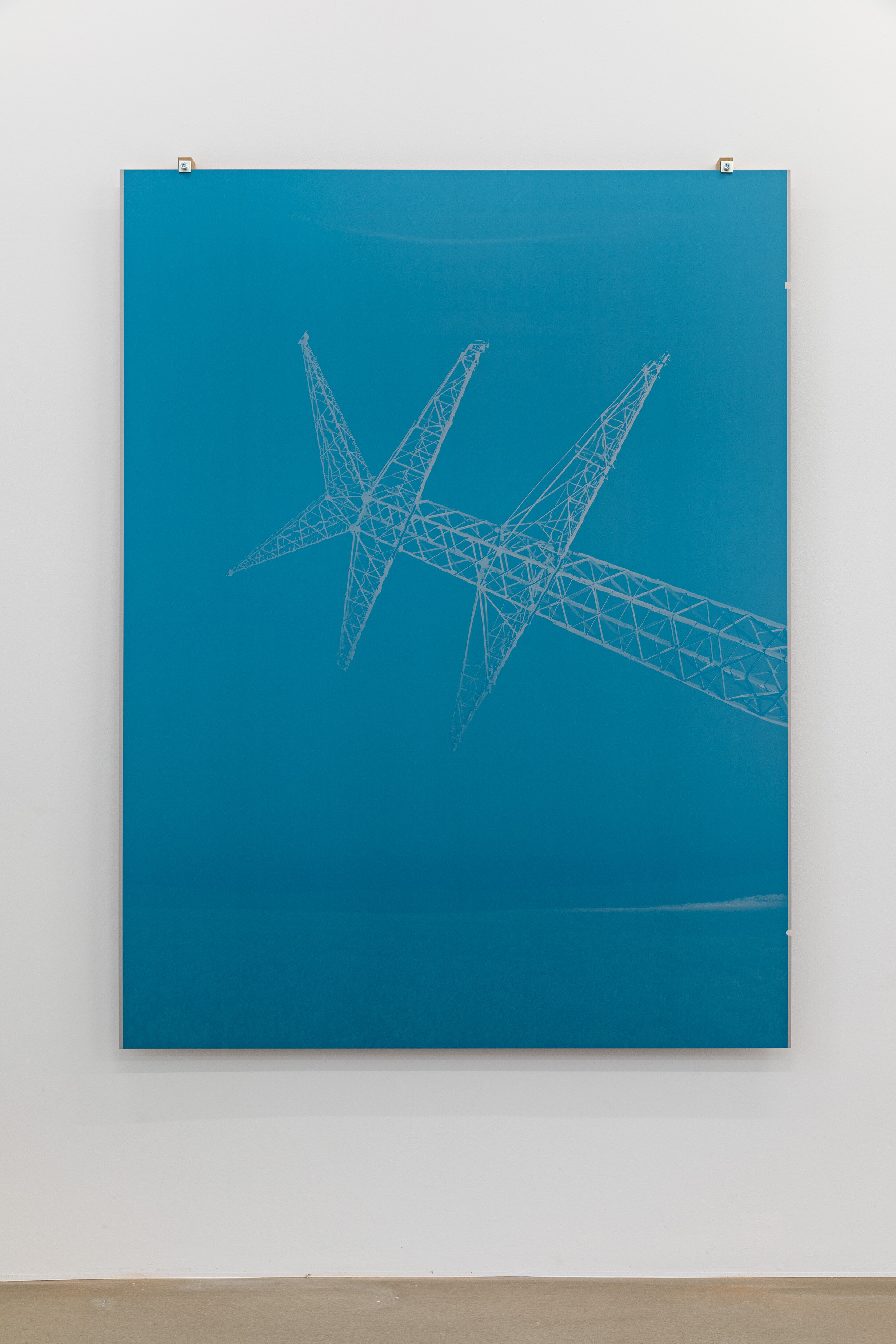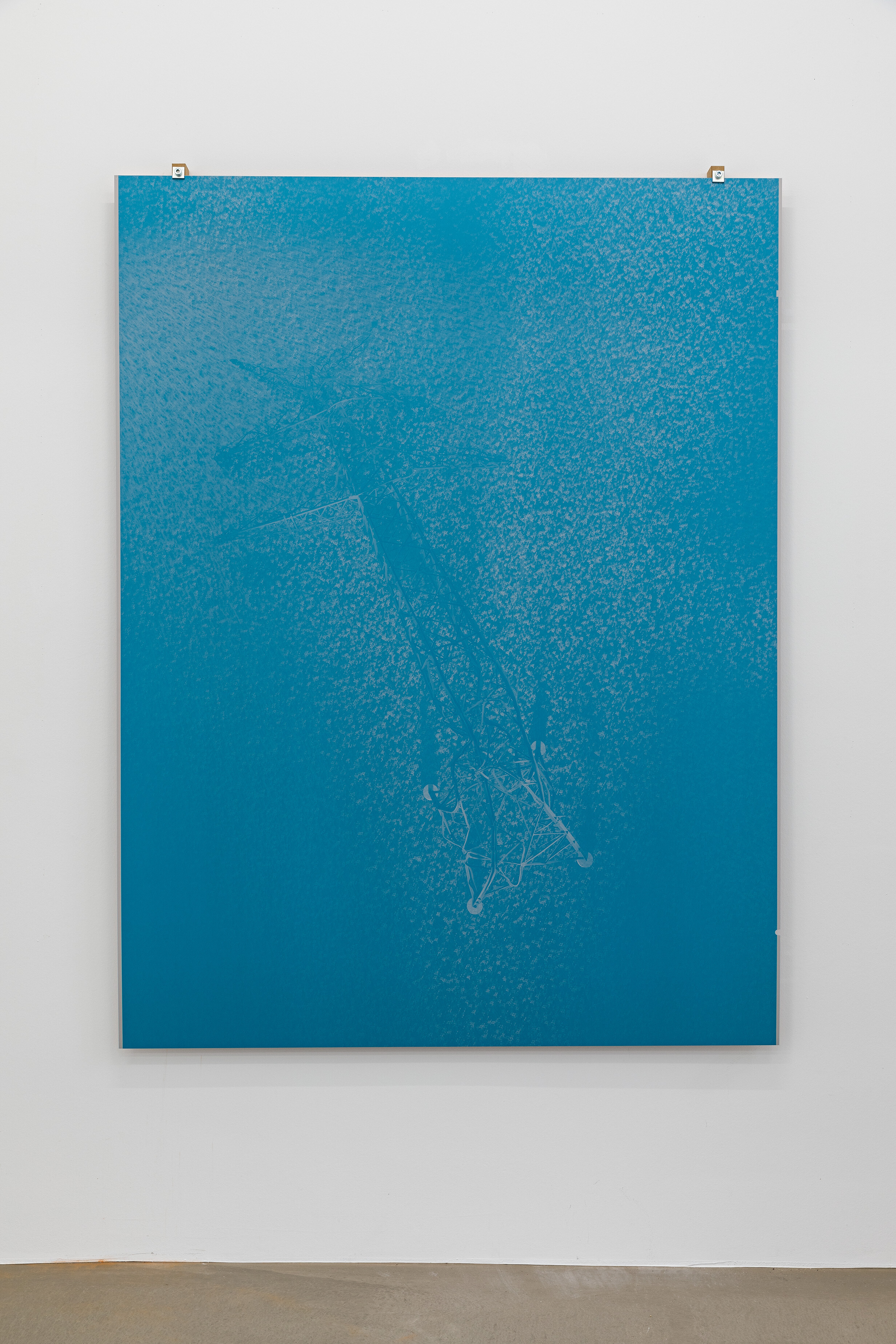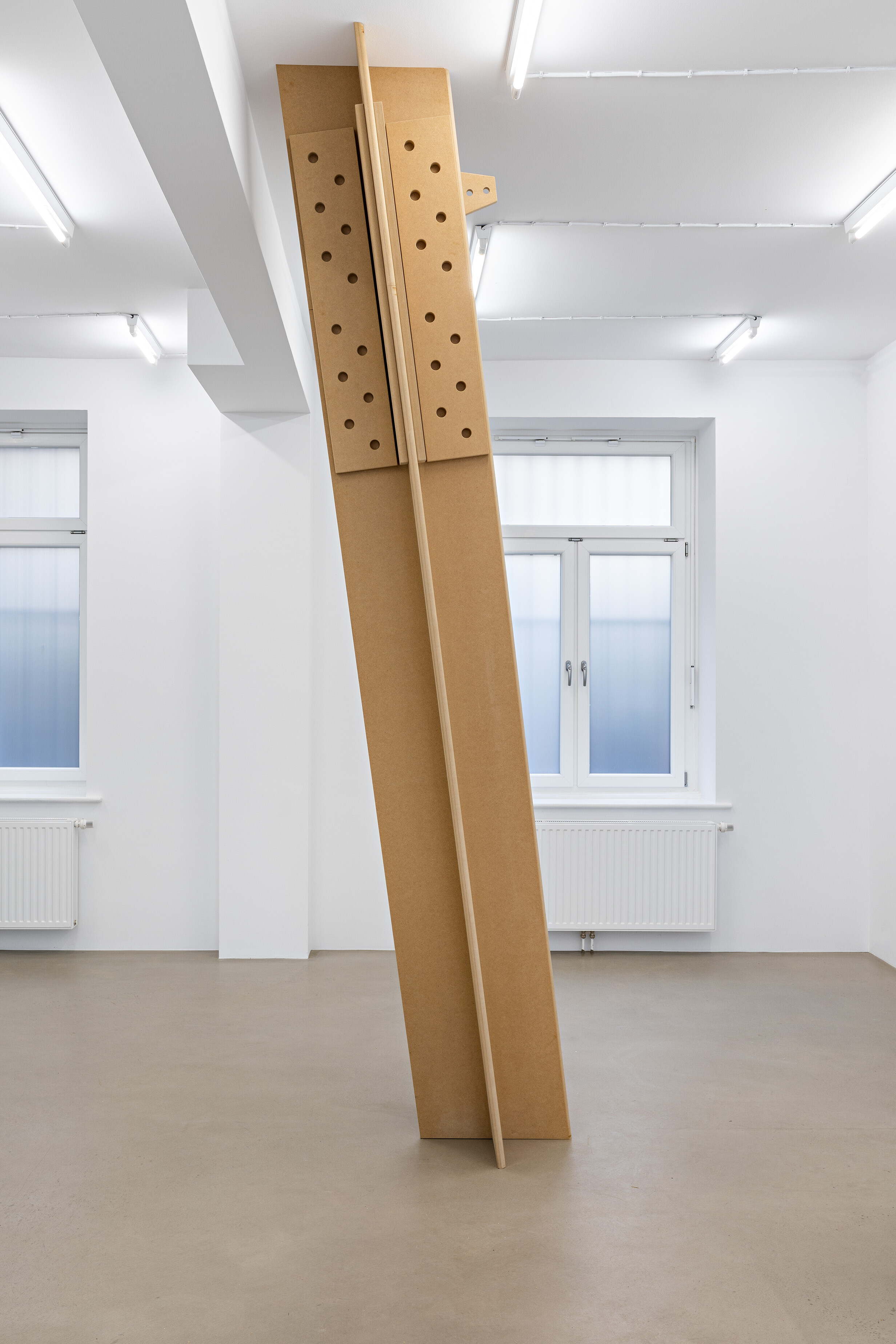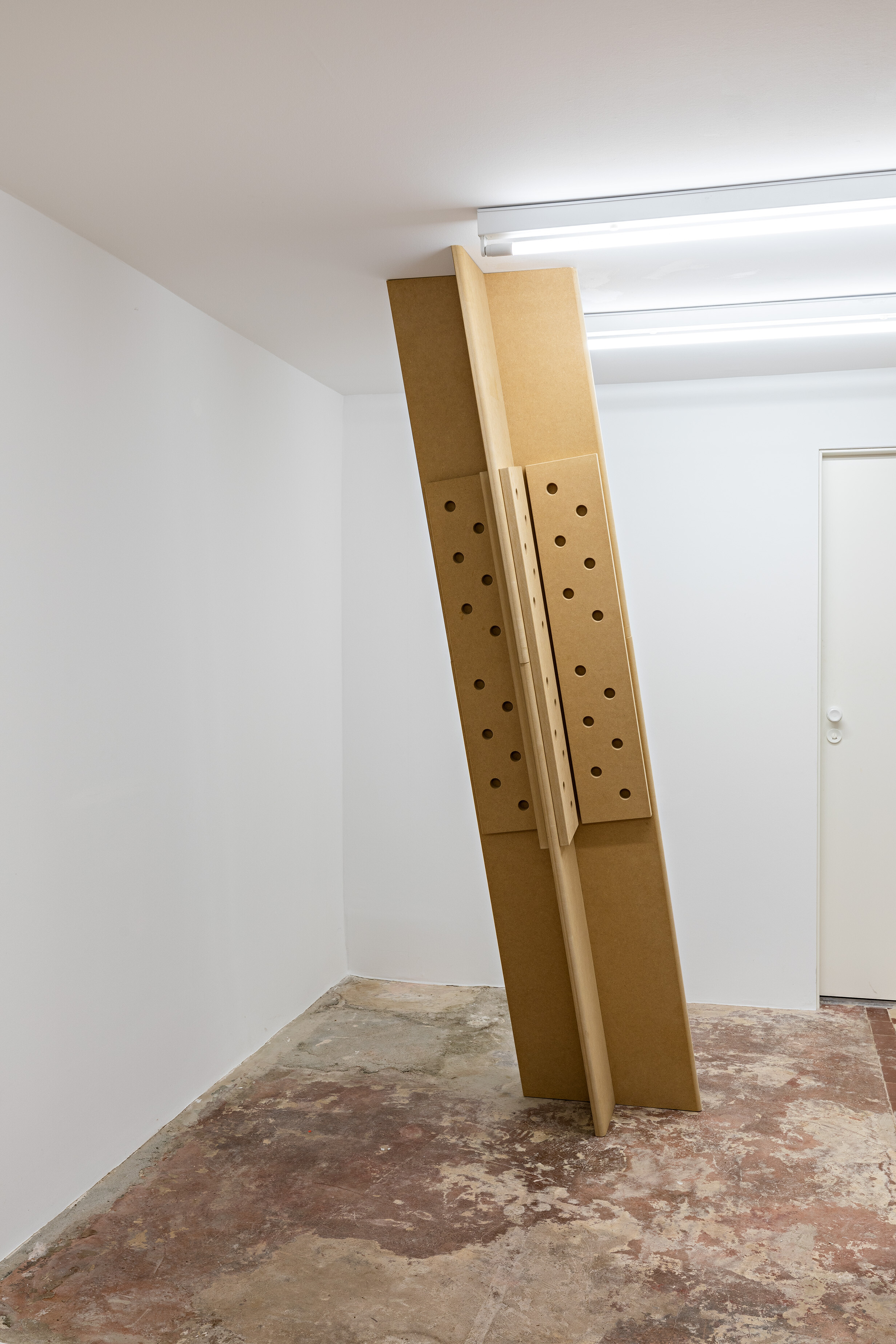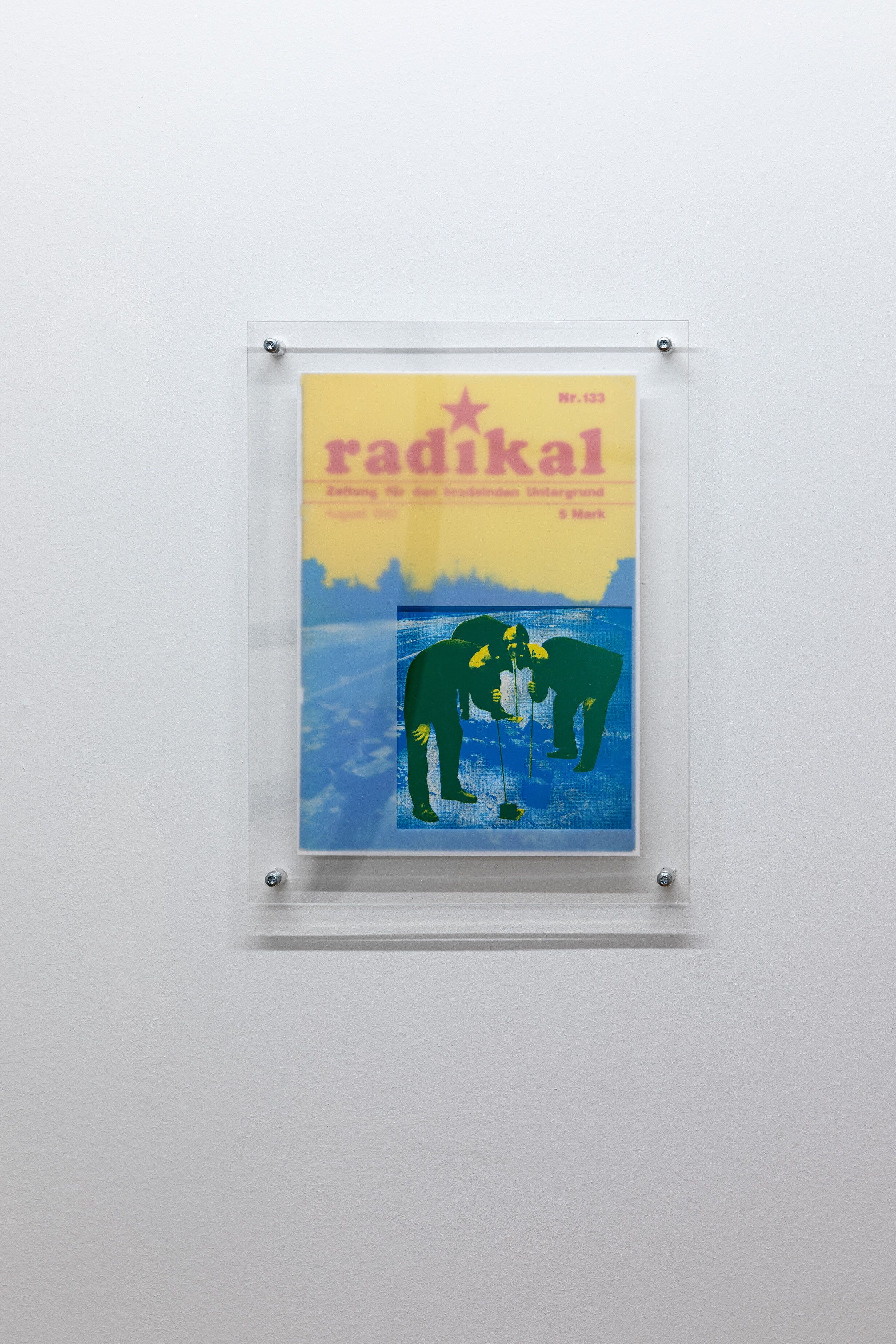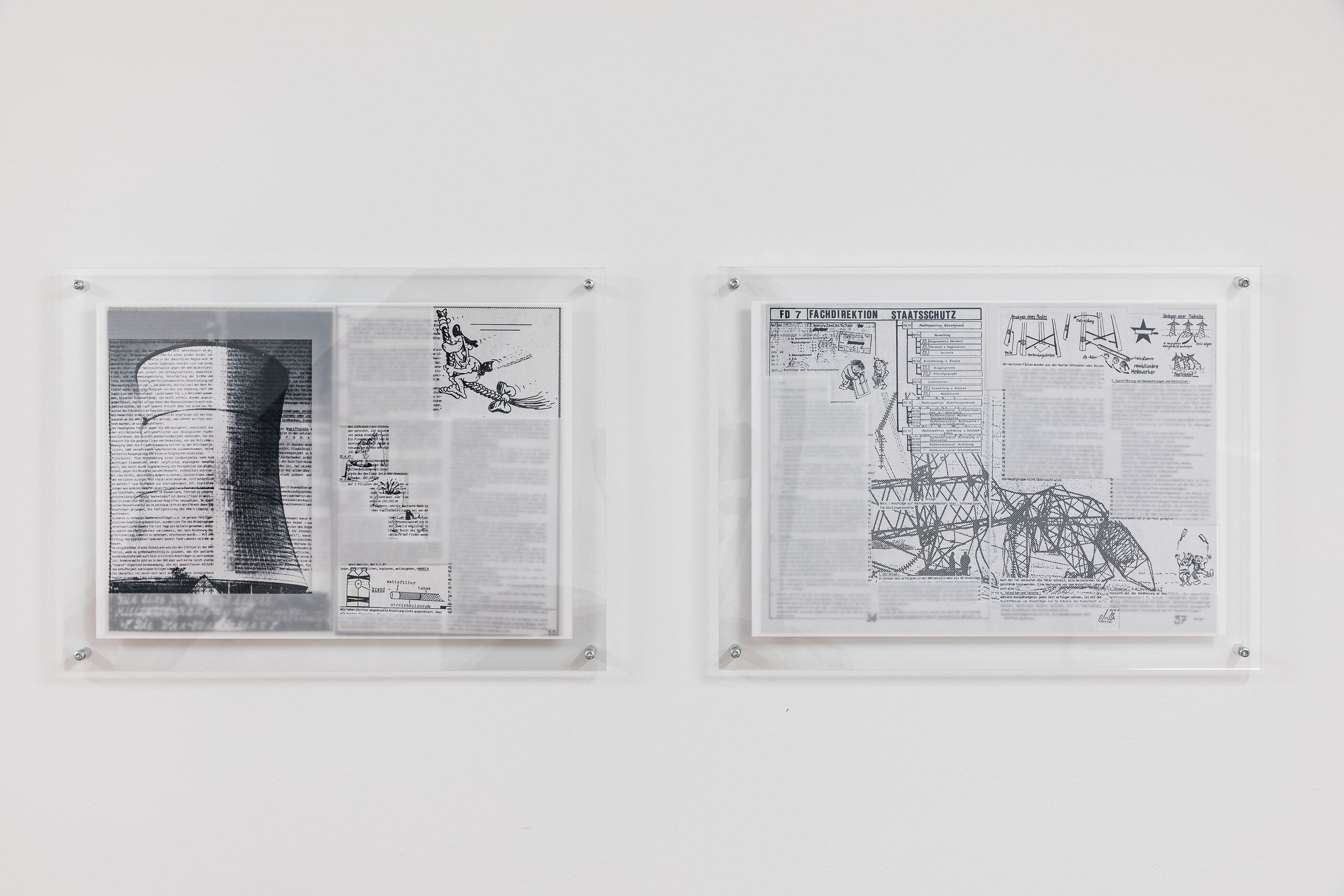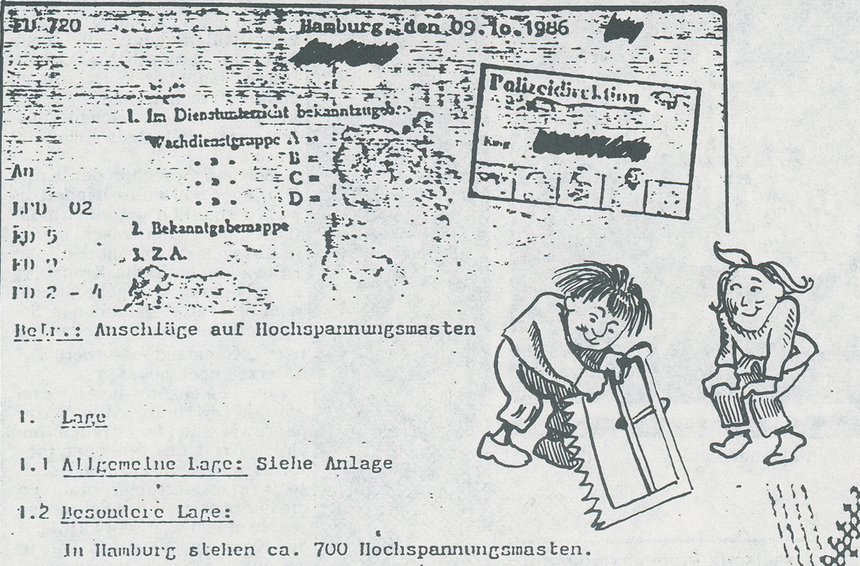In a series of new works produced for the exhibition, Paul Kolling addresses the shifting historical significations loaded onto Germany’s energy infrastructure and its rhetorical treatment in the public imaginary. In a sequence of images on offset printing plates, framed pieces of anarcho-leftist ephemera, and a sculptural work spanning the two stories of the gallery, he dramatizes the separation between energy producers and distributors, state and citizen, historically amplified by nuclear Cold War-era geopolitical tensions and the Chernobyl meltdown – schematizing the potential transgressions by which these dynamics could be inverted.
Contemporary discourses of energy politics intertwine with those of political activism of the 1980s through imagery sourced from the German autonomous-leftist magazine radikal[1], which was subsequently banned and dissolved for disseminating subversive information. The publication’s transgressive content resulted in the German state filing criminal proceedings against them for promoting the formation of terrorist organizations. Its ensuing censorship made evident how not only electrical power flows through these infrastructural layers, but also narrative signification: the electrical grid channels energy into citizens’ homes, but is also a vector of statecraft and ideology.
A massive, imposing electricity mast – reproduced at 1:1 scale based on plans and schematics from a major electricity grid operator – is rendered as the stage on which these tensions are materialized, itself a product of state and institutional collaboration. The falling power mast invokes a particular image of averting state control, the anti-nuclear stance standing in for a larger opposition to prescribed exercises of technological power. These implications later shifted when, amidst a turn towards neoliberal green policies, a larger portion of the power grid and infrastructure became available to be developed and reclaimed by private enterprise, no longer hindered by the regulatory hurdles and cost and value proposition related to nuclear energy production and development.
Spatially, the sculpture is equally represented on both stories of the gallery, jutting through the floor, providing a linkage and serving as a reminder of power masts’ imposing scale. The bottom floor houses the inceptive ideological orientation and orchestration of proposed sabotage, the lower portion of the mast representing the initial point of contact for felling an electricity transmission tower, while the upper floor visualizes the resulting destruction. The reconstructed mast stands at an angle – which enhances a standing mast’s stability, but in this configuration, signifies its imminent collapse.
Whereas the scale is accurately represented, the material basis is skeuomorphic, consisting of 180kg of MDF – its reality is an evolving symbolic structure, not unlike the propositional gestures contained within the pages of radikal, its semiotic power functioning as both figurative rallying ideology and actionable proposal.
In parallel to the fragmentary reproduction of the infrastructure, the series of offset printing plates depict a tower in the process of toppling based on simulations resulting from scientific collaborations with TU Berlin – the plates that serve as their substrate gesturing towards the act of reproducing printed matter, the medium by which this subversive knowledge was once disseminated. Oriented counterclockwise, upon arrival a diptych displays the beginning of the structural failure, its sculpture counterpart providing the point of origin and looming sense of referential scale.
The models are deformed and rendered via the outcomes of a finite element method undertaken by the Department of Structural Mechanics and Analysis (TU Berlin) utilizing the schematics and blueprints Kolling requested and received from an energy transmission system operator. The last plate in the sequence presents a close-up of the rendered image in its final stage of destruction – portions of the image containing sharp edges and jagged lines, exposing the fidelity and resolution of the simulation. As a result, each image plate encapsulates a meta-contextual essence of the energy required to run the complex computer simulations in order to render the destructive depiction.
Each printing plate has the capacity to print its embedded image up to 500,000 times. In order to preserve this capacity while on display, the plates are installed as floating wall objects, hung with hardware similar to the kind used during printing, thus retaining their ability to eventually function as intended. Due to the recent spike in energy costs related to aluminum productions in the past 6 months, the producer has decreased the thickness of these plates from 0.4 mm to 0.36 mm (within a 10% norm deviation).
The rough translation of radikal’s motto (issue on display nr. 133 august 1987) is “newspaper for the seething underground.” Displayed in the basement of the gallery, which contains a kitchen floor pattern that would have been typical of the shared flat of this era where the production and political visions of these magazines might have been carried out, Kolling employs a masking technique to highlight the visual language that most appealed to him in the formation and development of the exhibition. The cover of the issue is situated as something akin to a piece of iconography, the other pages featuring the reappropriated seminal and eponymous characters of the German children's classic Max und Moritz sabotaging an electricity tower and an anti-nuclear passage. In one depiction, the diagram’s caption loosely translates to “they removed the nuts and bolts from the masts”; the nuts and bolts are also notably absent from the mast reproduced in the gallery. In the lead-up to this publication and noted in its pages, there had already been 60 documented attacks on electricity towers, spiking after the Chernobyl disaster.
The demise of radikal was, in some ways, the end of an era: autonomous and anarchist leftist organizations promoting sabotage and forms of militant protest abated with the rise of neoliberal ideology, which located private individuals, not state structures, as the locus of shifting public attitudes towards energy and its representational authority. Nearing the end of the 1980s, the anti-nuclear narrative was one of a number of developments that guided Germany’s foray into neoliberal green policies. By then, the public appetite for nuclear energy had waned as new regulations dismantled the ability to build its controversial infrastructure – and opinion was swayed by high-profile disasters – as the narrative shifted towards “cleaner” forms of renewable energy. The rendering, simulation, and 1:1 sculpture were all produced from the plans and schematics Kolling received from a leading European energy distributor, providing the structural basis for the renderings and sculptural components – an act that would have been considered unthinkable at the peak of radikal magazine’s era. Across these works, Kolling shows how visual language has been transformed into information, creating an ambiguous narrative between the emotional entanglement of the attackers and the abstract technical processing of data: deconstruction reconstructed.
[1]radikal is a magazine first published in West Berlin on June 18, 1976, which sees itself as the mouthpiece of the left-wing or radical left-wing movement. In the 1980s and 1990s, the newspaper had the largest circulation and was probably the most influential paper of the autonomous movement. Between 1984 and 1997, 210 investigations were conducted against the magazine for the formation of a terrorist organization, making it the magazine most frequently affected by criminal investigations and criminal proceedings in the Federal Republic of Germany. The magazine was published anonymously and conspiratorially from 1984 onward and appears irregularly. [Medico International Frankfurt / Paranioa City Buchhandlung Zürich und andere (Hrsg.): 20 Jahre radikal Geschichte und Perspektiven autonomer Medien. Berlin / Hamburg / Münster 1996]
⁓ Christopher Dake-Outhet
